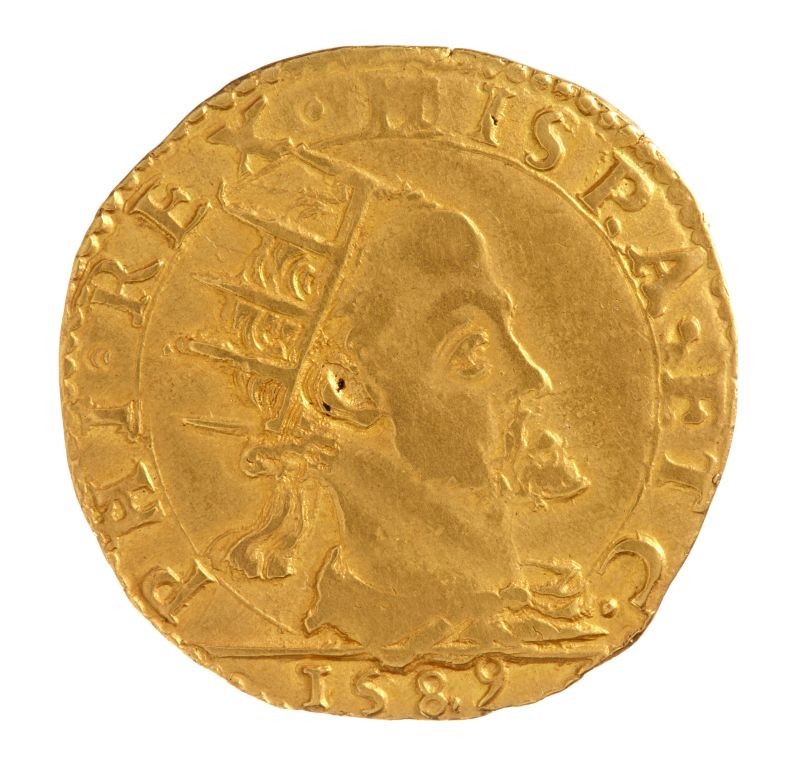Der Habsburger Philipp II. übernahm nach der Abdankung seines Vaters Karl V. ab 1555/56 die Länder der spanischen Krone. Dazu gehörten neben Spanien selbst, die spanischen Kolonien und große Teile der italischen Halbinsel, wie zum Beispiel das Herzogtum Mailand. In Mailand wurde dieses Doppeldukatenstück geprägt, auch Doppia genannt. (SV)
en

